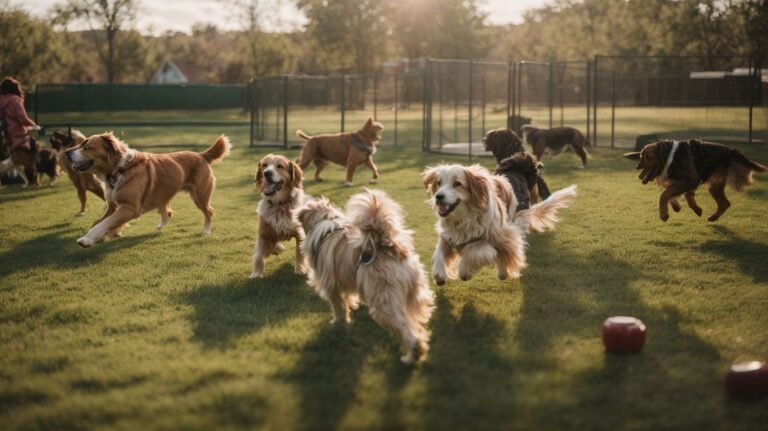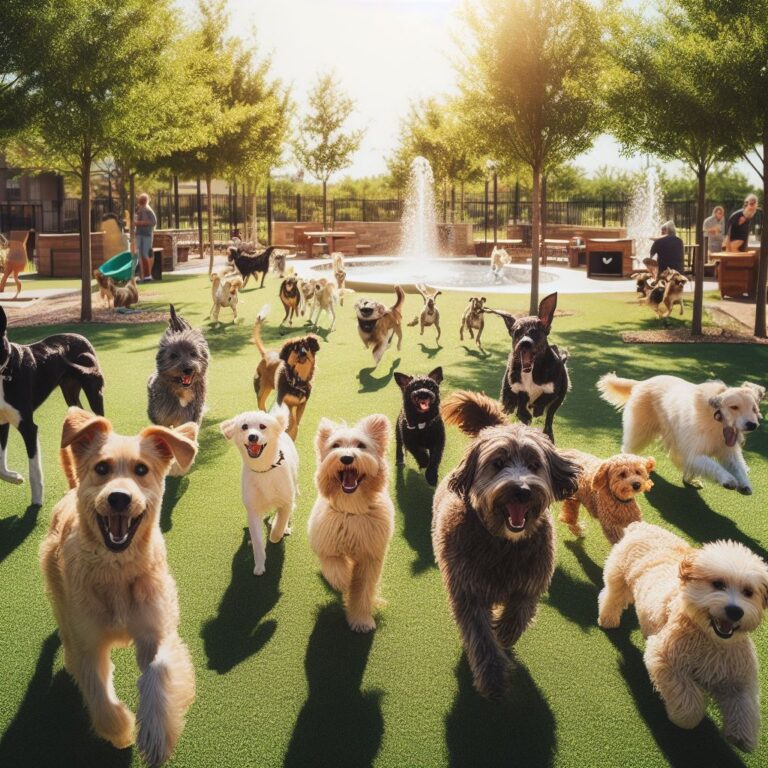Dog Park Laredo
- Dog Park Philadelphia - February 28, 2024
- Dog Park San Antonio - February 27, 2024
- Dog Park Indianapolis - February 26, 2024
Dog Park Amenities
One of the key aspects to consider when visiting a dog park is the availability of amenities that can enhance both the dog’s experience and the owner’s convenience. Many dog parks offer a range of amenities to cater to the needs and preferences of both dogs and their owners. One of the most common amenities is fencing or an enclosed area, which ensures dogs can roam freely and safely without the risk of running off into traffic or getting lost.
Another important amenity is water stations or fountains strategically placed throughout the park. These serve as a water source for dogs to stay hydrated during playtime. Some dog parks even provide separate sections for small and large dogs, allowing for safer and more enjoyable interactions among dogs of similar sizes. Benches or seating areas are often available for owners to relax and supervise their furry friends while they socialize and play.
In addition to these amenities, some dog parks may offer waste stations equipped with bags for easy cleanup and disposal of dog waste. This helps maintain a clean and sanitary environment for everyone using the park. Additionally, certain parks provide agility equipment, such as low fences, ramps, and tunnels, which can add an extra element of fun and physical exercise for dogs.
When choosing a dog park to visit, it’s essential to consider the amenities that best suit your dog’s needs and your preferences as an owner. The presence of these amenities not only ensures a safe and enjoyable experience but also promotes the overall well-being of both dogs and their human companions.
Local Rules and Regulations
One of the most important aspects of visiting a dog park is understanding the local rules and regulations. These guidelines are put in place to ensure the safety and enjoyment of all park visitors, both two-legged and four-legged. Common regulations include leash laws, which require dogs to be on a leash when entering and exiting the park, as well as in certain designated areas. Additionally, many dog parks have specific hours of operation, so it’s essential to familiarize yourself with the park’s schedule before planning your visit. Being aware of these rules will help create a positive experience for everyone involved.
In addition to leash laws and operating hours, there may be other regulations specific to each dog park. For example, some parks require proof of current vaccinations for all dogs entering the premises. This policy is essential for preventing the spread of infectious diseases and ensuring the health of all furry participants. Moreover, certain parks may have size restrictions or age limits for dogs, which are designed to maintain a harmonious and safe environment for all breeds and sizes. By respecting and adhering to these local rules and regulations, you can help create a canine haven where every dog and their owner can enjoy a stress-free and enjoyable visit.
Best Times to Visit
One of the key factors to consider when planning a visit to the dog park is the time of day. The best times to visit the park are typically early in the morning or late in the afternoon. During these times, the temperature is usually cooler, making it more comfortable for both dogs and their owners. Additionally, the park is usually less crowded, giving your furry friend more space to roam and play without feeling overwhelmed.
Another factor to consider when choosing the best time to visit the dog park is the weather forecast. It is essential to check the weather conditions before heading out to ensure a pleasant experience for both you and your canine companion. Avoid going to the park during extreme weather conditions such as storms, heavy rain, or intense heat. These conditions could pose safety risks and may not be enjoyable for your dog. By choosing the best times to visit the park and considering the weather, you can maximize your dog’s enjoyment while keeping them safe.
Dog Park Etiquette
It is important to practice proper etiquette when visiting a dog park to ensure a safe and enjoyable experience for everyone. Remember to always clean up after your dog by promptly disposing of their waste in designated areas. This not only helps maintain a clean park environment but also prevents the spread of diseases.
Furthermore, it is crucial to closely monitor your dog’s behavior and intervene if necessary. Keep a close eye on your furry friend at all times to prevent any aggressive or unruly behavior. Remember that not all dogs may get along, so it’s important to be mindful of your dog’s interactions with others and intervene if any signs of aggression or discomfort arise. By being vigilant and considerate of other park visitors, you can contribute to a positive and harmonious environment for all.
Tips for Socializing Your Dog at the Park
One of the key benefits of taking your dog to the park is the opportunity for socialization with other dogs and humans. However, it’s important to ensure your dog’s interactions are positive and safe. Here are some tips for socializing your dog at the park:
1. Start with leashed greetings: Before allowing your dog to interact with other dogs, start by introducing them on a leash. This allows you to gauge their reactions and control the situation if needed. Observe body language closely, looking for signs of fear or aggression. If either dog seems uncomfortable, consider trying another introduction later.
2. Encourage positive interactions: When your dog is ready to meet other dogs off-leash, ensure the first interactions are positive. Choose dogs with calm and friendly temperaments, and introduce them in a neutral area rather than one dog entering another’s territory. Allow them to sniff and greet each other, but be ready to intervene if play turns too rough or aggressive.
Remember, every dog is unique and may require different approaches to socialization. Be patient and observant of your dog’s behavior, and always prioritize their safety and well-being at the park.
Common Safety Concerns at Dog Parks
Among the hustle and bustle of a local dog park, safety concerns can easily arise. One common safety concern is the potential for aggressive behavior between dogs. While most dogs are well-behaved and friendly, there are always some that may exhibit aggressive tendencies. This can lead to altercations, posing a threat to both dogs and their owners. It is crucial for dog owners to closely monitor their pets’ behavior and intervene if any signs of aggression arise. Additionally, it is important to ensure that dogs are properly socialized and trained before bringing them to a dog park, as this can greatly reduce the likelihood of any aggressive incidents.
Another safety concern at dog parks is the risk of injury, particularly among smaller and more vulnerable dogs. Larger and more energetic dogs can unintentionally cause harm to smaller dogs during play or roughhousing. It is essential for owners to be aware of their dog’s size and temperament, and to closely supervise their interactions with other dogs. Additionally, it is recommended to separate different sizes of dogs into designated areas within the park, allowing for a safer and more enjoyable experience for all. By taking these precautions, dog owners can help prevent any potential injuries and ensure a safe environment for all dogs at the park.
Benefits of Regular Dog Park Visits
Visiting the dog park regularly not only provides physical exercise for your furry friend, but it also offers a range of benefits for their overall well-being. One of the primary advantages is the opportunity for socialization. Interacting with other dogs and their owners at the park helps your dog develop important social skills, such as reading body language and understanding appropriate play behavior. It can also boost their confidence and reduce anxiety or fearfulness around unfamiliar dogs.
In addition to socialization, regular dog park visits allow your pup to expend excess energy and stay physically fit. The open space and various amenities, such as agility equipment or ponds, provide ample opportunities for exercise and play. This physical activity helps prevent obesity and supports a healthy weight, reducing the risk of a range of health issues associated with being overweight. Moreover, the stimulation provided by the sights, sounds, and smells at the park can help keep your dog mentally stimulated, preventing boredom and potential destructive behaviors.
Activities for Dogs at the Park
Dog parks offer a wide range of activities for our four-legged friends to enjoy. From running and playing to socializing with other dogs, there is never a dull moment at the park. Many dog parks are equipped with spacious open areas where dogs can run freely and burn off energy. These open spaces are perfect for a game of fetch with a frisbee or a tennis ball. Dogs can also engage in friendly chase games with their furry friends, providing a fun and interactive way to stay active.
Aside from running and playing, dog parks often have designated agility equipment that can provide hours of entertainment for dogs. These equipment include tunnels, ramps, hurdles, and weave poles that allow dogs to navigate through obstacle courses. This not only stimulates their physical abilities but also enhances their mental agility. Engaging in these activities can help dogs develop problem-solving skills and improve their coordination. Additionally, some dog parks may even have swimming areas or splash pads, providing a refreshing and enjoyable experience for water-loving pups.
How to Find the Nearest Dog Park
Finding the nearest dog park to your location can be a breeze with the help of modern technology. One of the easiest ways to locate a dog park is by using a mapping application on your smartphone or computer. Simply enter your current location or address, and the app will provide you with a list of nearby dog parks. These applications often include helpful features such as user reviews, park amenities, and even photographs, allowing you to choose the most suitable option for you and your furry friend.
If you prefer a more traditional approach, you can always consult your local government website or community bulletin boards for information on dog parks in your area. Many cities and towns provide comprehensive lists of park locations, along with any special regulations or requirements. Additionally, you can reach out to local community centers or animal shelters to inquire about nearby dog parks, as they often have helpful resources and contacts. Remember, it’s important to consider the distance, accessibility, and safety of the park before making your decision.
Maintaining a Clean and Safe Dog Park Environment
The overall cleanliness and safety of a dog park are essential for the well-being of both the dogs and their owners. As responsible users of these public spaces, it is important to take certain measures to ensure that the dog park remains clean and safe for everyone to enjoy. One way to contribute to the cleanliness is by promptly picking up after our dogs. By bringing along waste bags and disposing of them in designated receptacles, we can minimize the chances of unsightly messes and potential health hazards.
Another crucial aspect of maintaining a clean and safe dog park environment is ensuring that our dogs are up to date on their vaccinations. Regular visits to the veterinarian will help ensure that our furry friends are protected against contagious diseases that can easily be spread in a communal setting like a dog park. Additionally, dog owners should be mindful of any signs of illness in their pets and refrain from bringing them to the park until they have fully recovered. This responsible behavior can go a long way in preventing the transmission of diseases and keeping the dog park a safe place for all its visitors.




